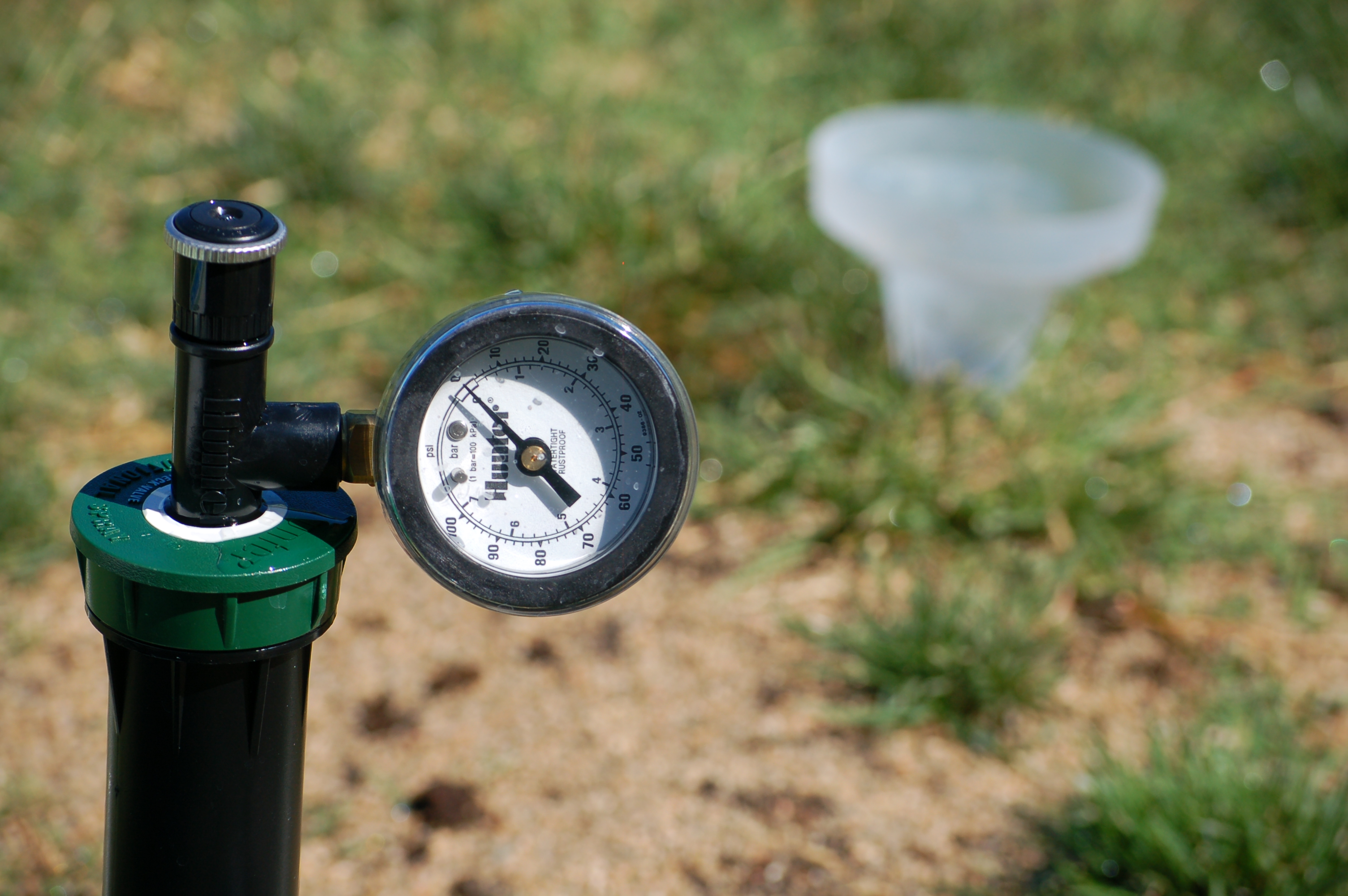How much pressure does your sprinkler system need? You can answer with one word: Enough. Whether your system is for a residential or commercial property, you want to maintain enough pressure when the system is running.
Even a well-designed system will see fluctuations in pressure, because some pressure loss is normal. Locating a problem with pressure can be easier when you understand how to identify the normal pressure losses your system is experiencing.
Friction loss reduces pressure, and that’s normal
A system’s working pressure—the pressure at any point in the system with a given quantity of water flowing past it—will vary based on elevation and friction loss.
Friction loss is a pressure loss caused by water flowing through pipes, fittings and component parts. The interior surfaces create friction on the moving water, which reduces the water pressure. This happens in the water meter, pipes, fittings, valves and backflow prevention devices.
5-4-2-3-1 ways to measure normal pressure loss
Friction loss is normal, so what are the average pressure losses you can expect friction to cause in a system? A general rule of thumb, and in an easy format to remember, is 5-4-2-3-1:
 5 psi through the water meter
5 psi through the water meter- 4 psi through the backflow device
- 2 psi through the main line
- 3 psi through the valve
- 1 psi through the lateral line
This totals 15 psi from beginning to end in the system.
Once you know the average normal pressure losses at various points in the system, you can isolate problem areas by using a pressure gauge.
Get more in-depth about solving pressure problems
5-4-2-3-1 is a general rule of thumb, and many factors can change it. To learn more about troubleshooting pressure restrictions in an irrigation system, check out this Ewing video.
[embed]https://www.youtube.com/watch?v=gfPuUVWWzUE[/embed]
Interested in more maintenance solutions for your irrigation system? Your local Ewing store can help, so stop by today.




